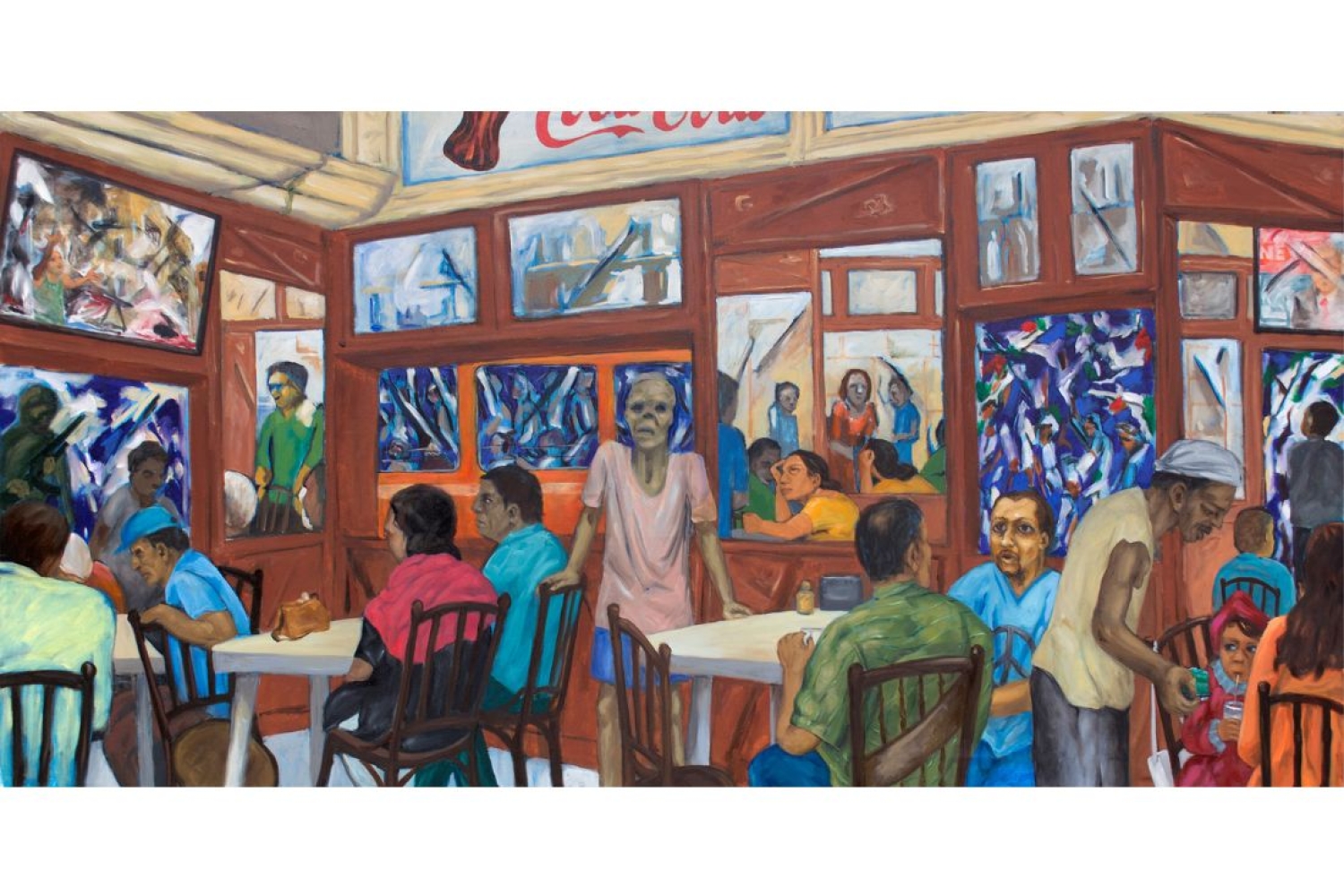
Irani Cafe and the War Elsewhere

Irani Cafe and the War Elsewhere
In front of my flat in Delhi is a building with its front walls crumbled into bite-like pieces. When I move outside of my colony, metro construction halts the way, disturbing lives in countless ways. As I walk to the nearby park, a fifty metre demolished strech that has created a curvature on the land meets me. When I go to visit an art gallery a few kilometres away, a building that stands right opposite it has been destructed for so long that now plants and creepers have made their home in the debris. These are the markers of a 'modern' city in India. Where in front of beautifully constructed spaces lies a deconstructed one or the one that is ongoing under construction, wearing the tag of future development. With the constant construction and destruction of our surroundings, these cities that we inhabit come with evolutions that produce many kinds of feelings that go unnoticed, lying under the debris of it all. What does one feel with the brokeness of our cities? Is there a sense of utopia for the future or dystopia of the presence or does it not impact one's daily life at all? How does our feelings differ from our postion in society? With a brush, artist Sudhir Patwardhan captures all these questions and our incessantly altering atmospheres with an understanding of class, caste and identity.
As he showcases his new exhibition, ‘Cities: Built, Broken’, at Vadehra Art Gallery, I explore his work with him on the city of Mumbai and his attempt at showcasing lives in crowds and transformations.
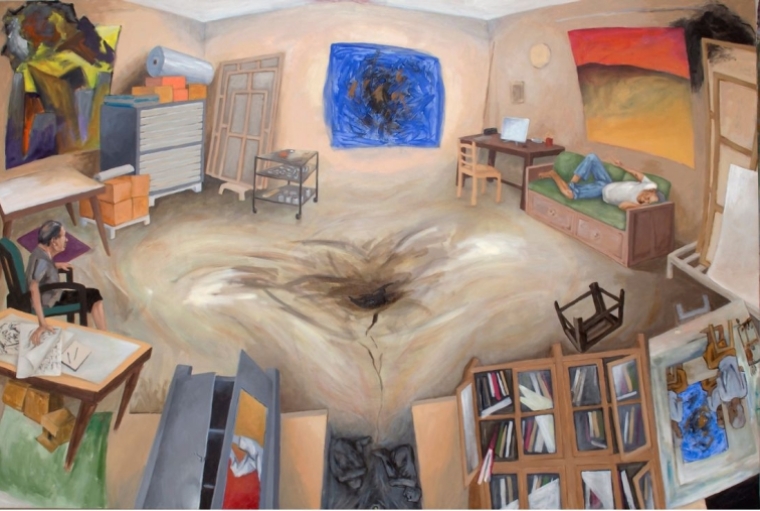
War Zone Studio
The Human Condition in Cities
Nancy Adjania, in her book Sudhir Patwardhan: Walking Through Soul City, writes, 'When Patwardhan came to Bombay in 1973, he was shocked to see so many people on the streets, many of them living in horrific conditions.' This moment of realization seems to permeate Patwardhan's work, where the sense of a city overwhelmed by both its infrastructure and its people is evoked— a cityscape that often exhausts its inhabitants. It's reflected in the overcrowded metro stations on a Monday morning, or when you glance below at the congested roads. In this landscape, an identity is formed and sometimes distorted by its surroundings.
Patwardhan shares that the core of his work is driven by empathy. 'I think the starting point is the empathy one feels for the people one sees around oneself, just for the way they are. Understanding their life through the lens of class, caste, identity, etc., follows this initial attraction. Hence, the portrayal of the social aspects of their life and their struggles, even if foregrounded, is always underlaid by an emotional involvement.'
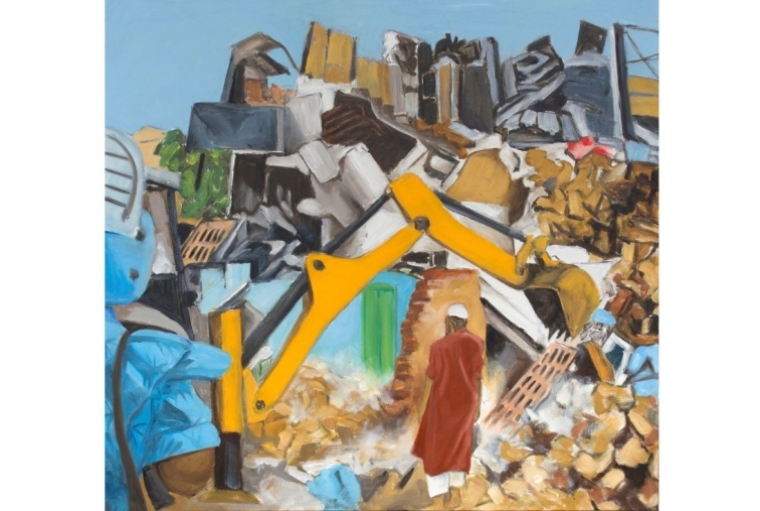
Under a Clear Blue Sky
On Societal Disconnection
It often comes to my mind that if existence of such chaos cause alienation. Even when you are surrounded with an overwhelming amount of people, it's common to feel lonely. Patwardhan's paintings seems to depict that isolatory feeling. In a paitning like 'Irani Cafe and the War Elsewhere', we see a man looking right at us amidst the cafe filled with chattering people with exhaustion and loneliness beaming in his expressions. When I ask Patwardhan about this alienation, he thinks of it as 'a tricky question.' He goes on to say, 'Do I see alienation as a theme in my work? In interpreting my own work post facto I could use the term ‘alienation’ just as others use it to describe aspects of my work. But do I set out to depict ‘alienation’? I would say no. I set out, each time, to find the painterly equivalent of some particular experience.' But he leaves the the judgement to the viewers irrespective of his intention, 'It may happen that these experiences fall into a recurring pattern, but for me they are particular. So the question is difficult to answer as an artist. The artist does not see his work as a vehicle, but as an end in itself. But accepts that the work can have ramifications. On the other hand, as someone thinking about art in general, one can read recurring themes in any artists work and interpret the state of that society or the human condition in terms of these themes.' His work focuses on individual experiences rather than thematic, but as observers, our mind forces us to find patterns and alienation seems to be one of them.
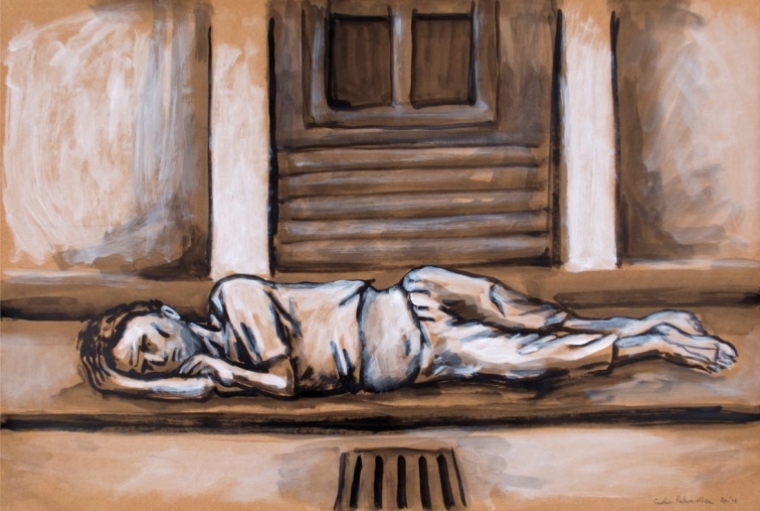
Homeless
Transformations of Mumbai
Since, Mumbai is the root of most paintings in 'Cities: Built, Broken', I had to ask Patwardhan about what he feels about the transformations of his home city. 'Right now Mumbai seems to be undergoing exponential change. Parts of the city are becoming totally new and different, very high tech and jazzy. For most people these are experienced as ‘things’ descended from above, not as organic growths. To some this is thrilling, to others it is disorienting. But many parts of Mumbai will mostly remain the same or benefit only trickle-down changes. For people in these parts the sense of ‘this city’, ‘our city’ will continue. For a new generation of ‘haves’ the history of this once industrial city and its social fabric will have no meaning. The experience of the city is so different for different classes of people that it is not easy to generalise. For me it was possible earlier to imagine ‘our city’ and its problems, as inclusive of all citizens and migrants. That has become very difficult.'
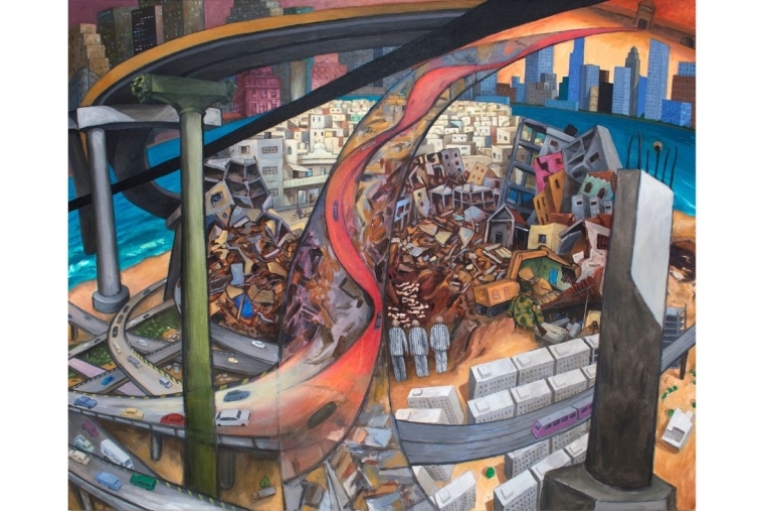
Built and Broken
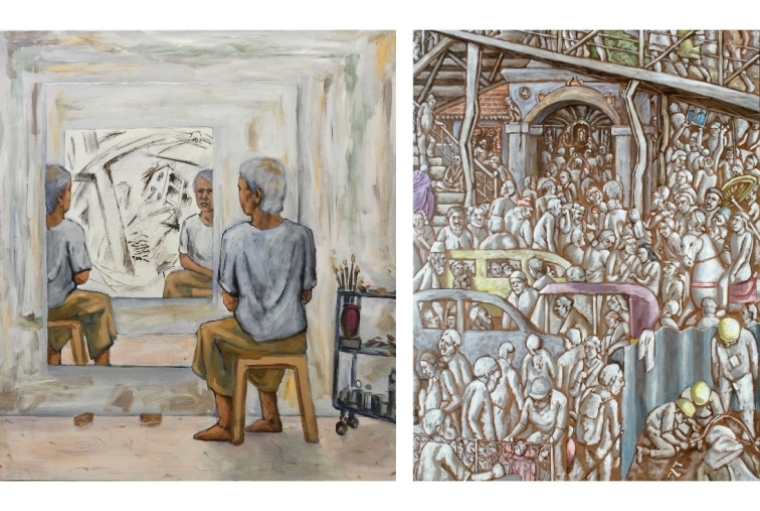
Questioning (left) | Just People (right)
Documenting Emotions
One of the things that Patwardhan strongly wants people to feel is, 'In all these flyovers and metro lines being laid, and it seems to take forever, I hope viewers will see and recognise the present that is trampled in the name of the future. Not that one wants to propose another way, but a note must be made of this present experience.' Patwardhan aims to highlight a contrast of imagining a bright future while living in the broken world, metaphorically and literally. 'The contrast between the hype and euphoria that is created around extravagant development and the nightmarish destruction of cities in other parts of the world strikes one hard. One can’t and should not keep these two apart.' Moreover, his work is not about the changing ladscape but what this changing landscaping is doing to people. The anxiety that construction generates needs to be held on, he emphasises. His portrayal of people reminds us of our existence amidst all of this, one that is 'caring, uncaring, hating yet carrying on.'
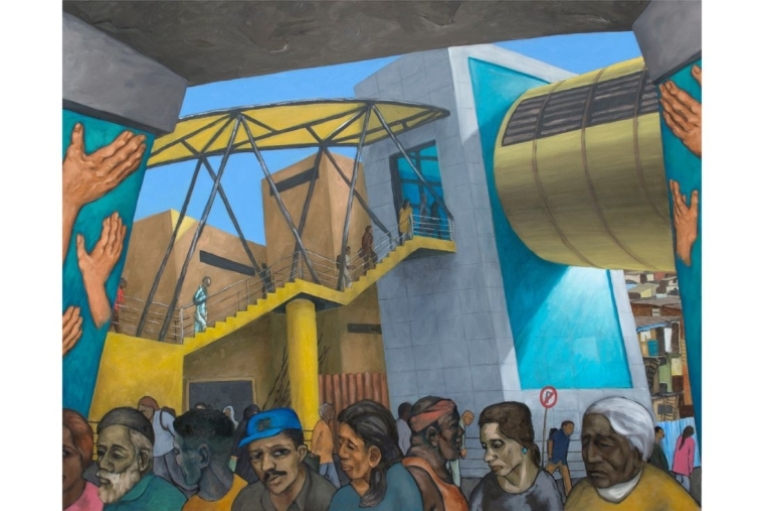
In and Out
Words Paridhi Badgotri
Date 07.02.2025